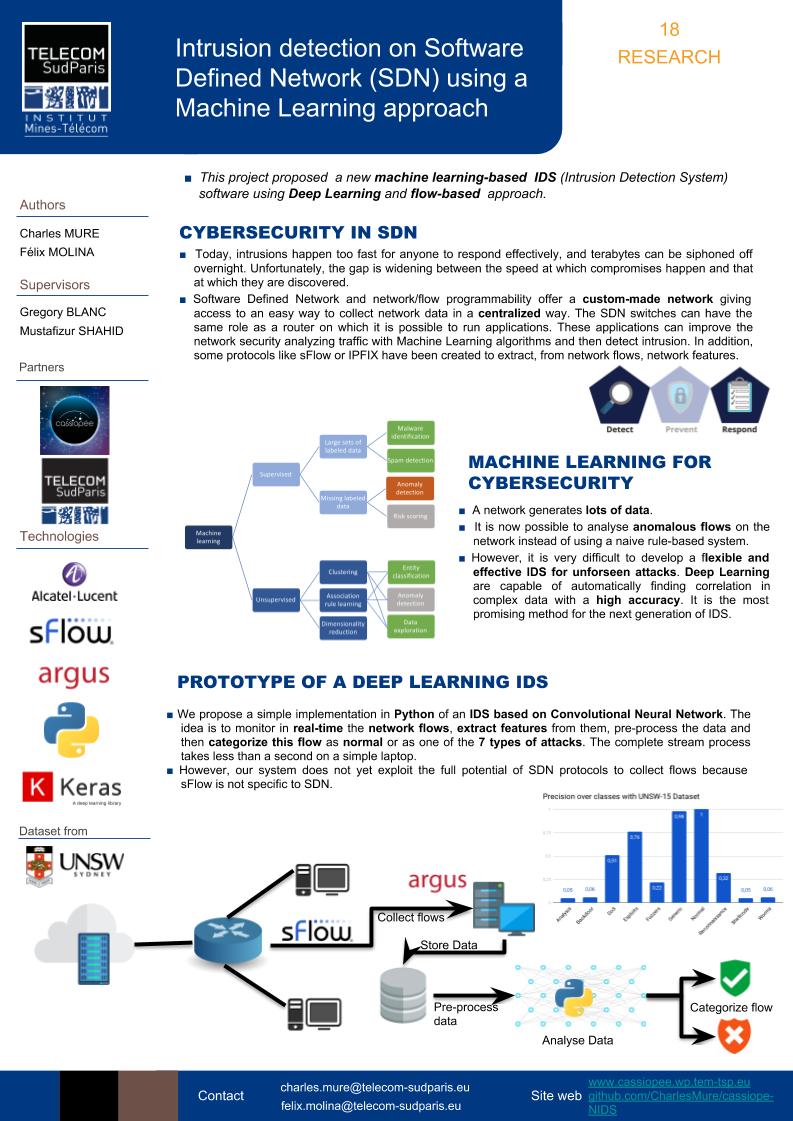Creating a NIDS based on a Deep Neural Network (CNN) - a technical approach
The project was conducted during my master studies at Télécom SudParis.
We Use Python3, TensorFlow and Keras to generate and test our models. The collection part is handle by
pip3 install numpy tensorflow keras imblearn
In order to collect the data from the network, we use the auditing tool Argus. You need to install Argus and Argus-client. Follow the instructions on their website.
To train the model, you just need to launch the script model_train
python3 model_train.py
This step will export the model of the network as a .json and the associated weight as a .h5 file.
First step, you need to monitor and extract the features of your network using Argus.
- Listen on the interface (.ie enp0s3) and stream the result on the port 4444
argus -i enp0s3 -P 4444
- Extract the features from the stream and populate a small .log file.
./ra -S localhost:4444 -n -L -1 -c , -u -s saddr daddr sport dport sttl dttl state dur dpkts sbytes dbytes rate sttl dttl sload dload smeansz dmeansz - tcp or udp >> collect.log
# If you use sFlow
./ra -S sflow://localhost:6343 -n -L -1 -c , -u -s saddr daddr sport dport sttl dttl state dur dpkts sbytes dbytes rate sttl dttl sload dload smeansz dmeansz - tcp or udp
- Launch monitoring.py to pre-process the features of the extracted flow
python3 monitoring.py &
- Classify in real-time the flow using DeepLInspect.py
python3 DeepLInspect.py
- Fuzzers
- Backdoor
- DoS
- Exploits
- Generic
- Reconnaissance
- Shellcode
- Worms
